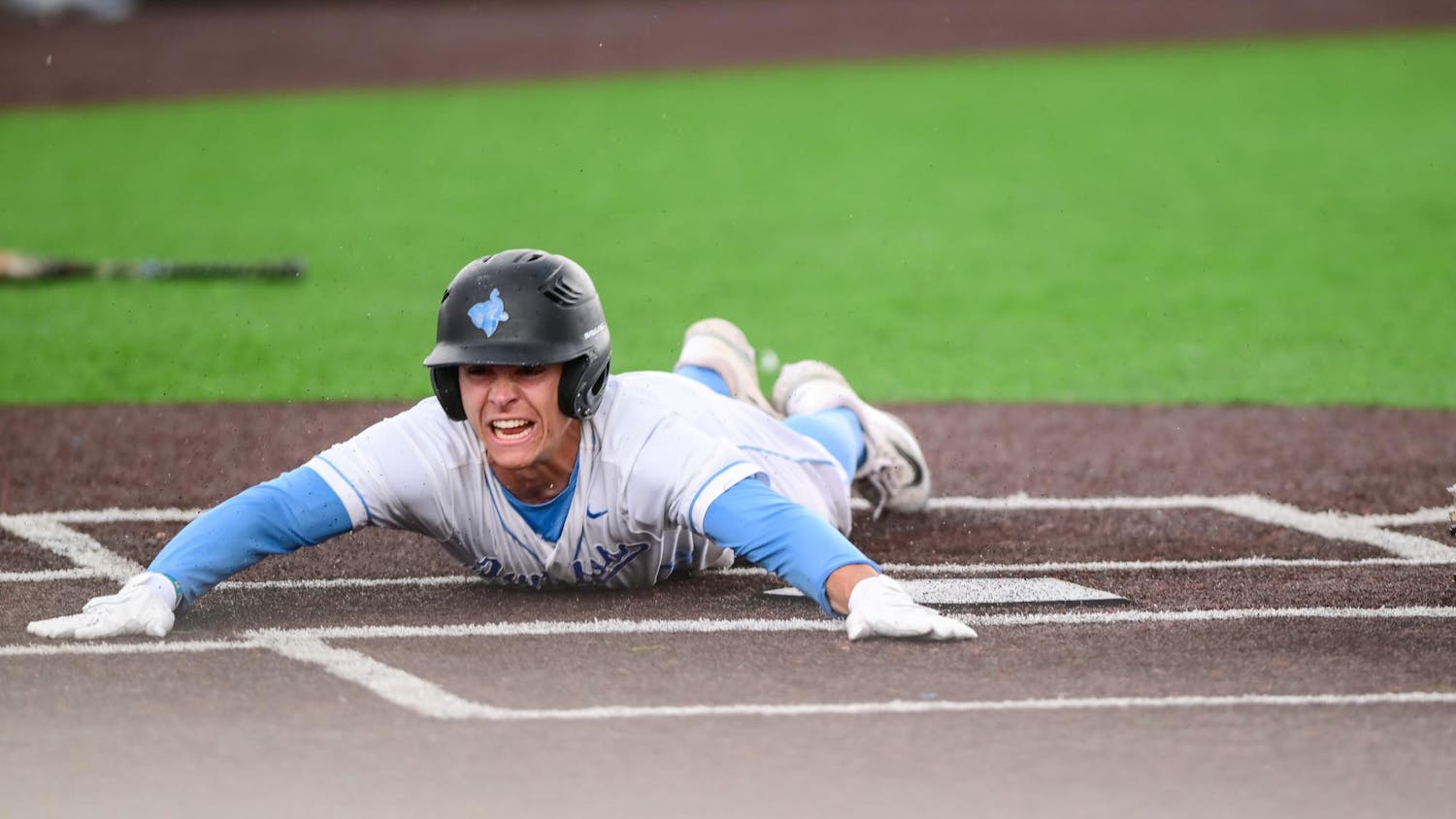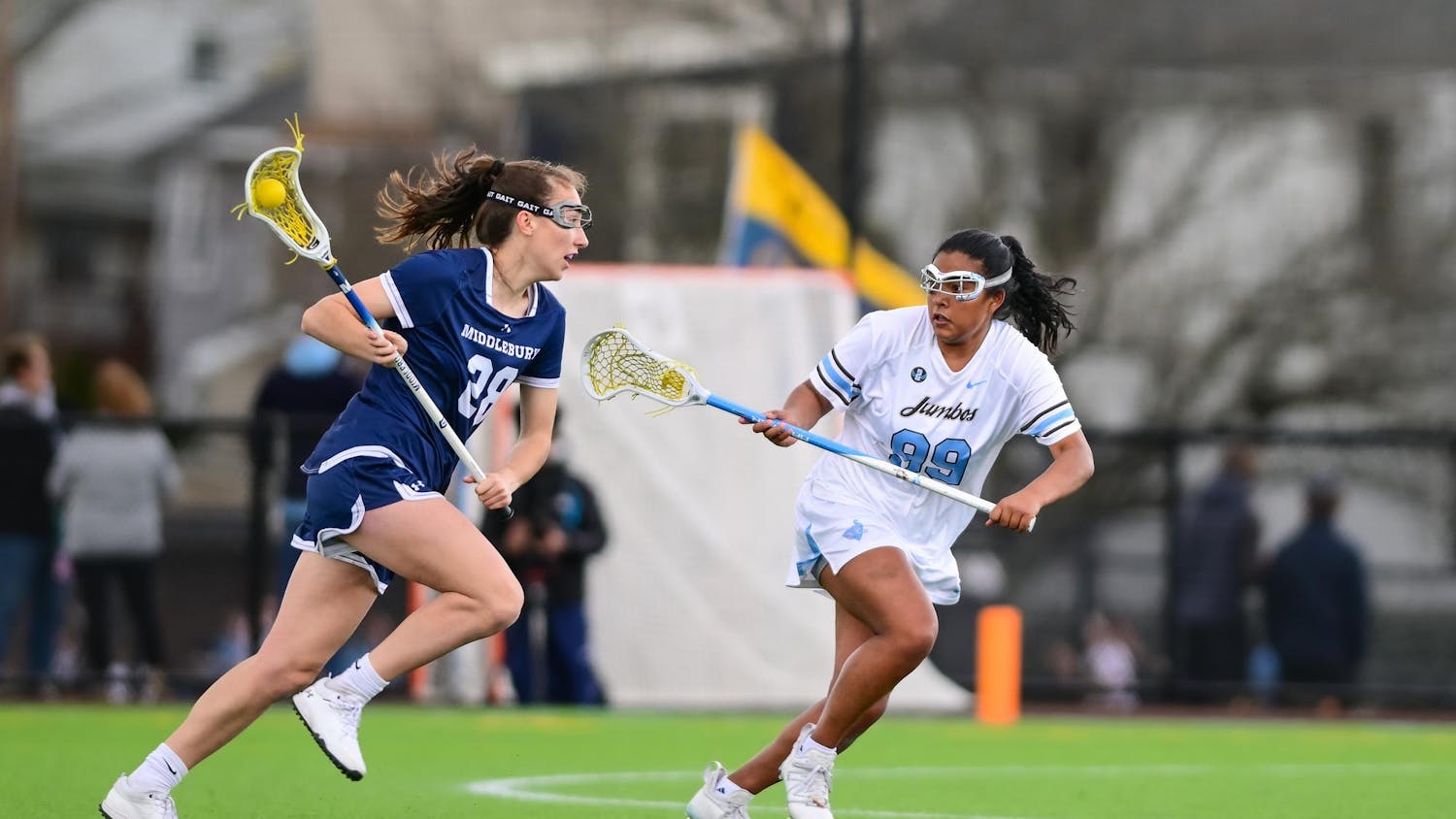The amenities at Toronto’s Varsity Centre, the recently renovated historic sports facility at the corner of Bloor and Devonshire, are a far cry from the luxuries we’ve come to expect from the big business of professional sports. There are long steel benches in place of plush seats, pre-made Subway sandwiches instead of gourmet kitchen offerings, and beer consumption restricted to a small, fenced-off section beneath the concrete grandstand.
Yet this past Saturday afternoon, a small but passionate crowd of Ultimate Frisbee fans proved that frills simply can’t compete with the atmosphere born out of pure passion. If you’d strolled past the stadium, you’d surely have overheard the series of roaring call-and-answer cheers, as several hundred spectators braved cloudy skies and the pervasive threat of a torrential downpour to will Toronto’s newest pro sports team to victory.
“Feel the…” “RUSH!” “Feel the…” “RUSH!” they chanted, doing their part to spur the upstart Toronto Rush to a decisive 28-18 win over the visiting Philadelphia Phoenix.
Eight games into their inaugural season of play in the American Ultimate Disc League (AUDL), the Rush are undefeated, and they’ve whipped the city’s loyal group of Ultimate fans into a frenzy. The team’s first home game on May 4 broke the record for the largest crowd ever assembled for a professional Ultimate game. Sure, those 2,300 spectators comprised less than five per cent of the capacity of a Blue Jays sell-out, but the figure is a milestone for this fledgling pro league.
“We’re trying to take this from a participation sport to a spectator sport,” said Jim Lloyd, the team’s co-owner and COO. He founded the Rush with his brother Rob and Rob’s son Mark, who functions as both team captain and general manager. “Toronto is a hotbed market that has a very active Ultimate community,” Lloyd continued. “It’s known to be one of the most prolific and skilled areas [for the sport]. So we knew we had a core of great fans, people who love this sport.”
Lloyd said the Rush’s fan base consists largely of dedicated Ultimate players, many of whom belong to the Toronto Ultimate Club, a 30-year-old recreational organization that began in the city’s Beach neighbourhood and now boasts 3,500 members.
But the desire to play and watch can be both a blessing and a curse. Saturday’s ticket sales totalled 997, but only 582 people actually showed up. Poor weather wasn’t the reason for the reduced attendance: A large out-of-town tournament, and the chance to hit the field themselves, lured many of the team’s season ticket holders away from the stadium.
With just one full season under its belt, the AUDL has already experienced its share of growing pains, with six of last year’s original eight teams relocating, abandoning the league, or folding altogether. The league responded by adding eight new franchises for the 2013 season.
With no television revenue to speak of and attendance figures in the hundreds, the AUDL is, so far, a decidedly low-budget operation. Lloyd declined to reveal the team’s salary range; he instead referred to the players’ earnings as “a yearly stipend…a small one.”
However, the dream of playing Ultimate at a professional level is inspiring to those who are used to paying their own way to travel to tournaments across the continent. Adrian Yearwood, who signed on to play with the team in mid-May, said the players are still adjusting to life as pro athletes.
“We’re still figuring out the difference between playing in a tournament [with] friends and family on the sidelines and playing for a couple hundred people who are cheering for everything we do. It’s a totally different vibe.”
With five home games left and a roster that looks like championship material, it’s a good bet the Rush will soon have the clout to offer a full VIP experience. Getting a little more liberal with the beer surely wouldn’t hurt.
Rush Hour

A Tycho concert has a lot in common with a psychoactive drug: Shared side effects include diminished neurotransmission, hypnosis and euphoria. The band's live performances closely resemble a lengthy acid trip; the effects come as somewhat of a surprise, and you don't fully realize the intensity of the journey until it actually begins. Right from the start, Tycho's music overtakes listeners, leaving them completely absorbed in the show. Tycho's frontman Scott Hansen seemed conscious of this at the group's April 18 performance at The Sinclair in Harvard Square. Onstage, the equipment looked pristine, with symbols featuring copper polish and neatly stacked synths, accompanied by Zac Brown -- the bands' live bassist -- standing perfectly straight. All this -- the symbols, synths and bassist -- was postioned in front of a white sheet. Everything was orderly, 100 percent pure and uncut.
Instead of indicating a propensity for simplicity, this white sheet served as a canvas for the group. Behind the band, a series of projected images was the focal point of the performance and of the music itself, corresponding perfectly with both the tempo and sentiment of the songs. In the beginning, color-changing geometric forms were projected onto the sheet. Eventually, the forms began to morph, as if they were being viewed through a kaleidoscope. Later, the projected shapes transitioned to grand depictions of the natural world -- dark caves and broad expanses of desert captured on live film. Though some of the images depicted light dancing off of water or the sun peaking over dunes, they remained largely static, capturing only subtle movement. In contrast, scenes of individuals breaking through the surface of the ocean or surging toward the top of a mountain were much more dynamic. Hansen clearly has a thing for the sun, favoring images in which light has an active role: it is found in droplets of water, in beams of light or passing through negative space. To the observer, the difference between motion and stasis dissolved, and life appeared as a picture rather than a series of events. Combined with a steady pulsing sound, the effect was disillusioning, separating the audience from distinguishable reality. Tycho is the closest you can come to doing drugs without actually taking any.
Tycho manages to achieve many of the same musical feats present on its popular records during its live performances. Sweeping melodic riffs, layered tones and percussive consistency were replicated with absolute precision. Rory O'Connor -- Tycho's drummer -- was almost mechanic, entirely in sync with Hanson's looped synth. While it was at times difficult to distinguish one track from another, each melody ultimately sounded distinct. Live, the synth felt both melancholic and comforting. There was a mathematical nature to the interplay between the musical elements, which interacted with a startling amount of precision.
Out of context, Tycho looks like the poor man's Radiohead. Frankly, a Tycho concert can often feels like a less engaging version of legitimate ambient bands like Atoms For Peace, Phantogram or Black Moth Super Rainbow. However, while it is fair to complain that live each song tends to blend together or feature recurring sounds, such critiques miss the bigger picture: namely, that much of the band's work is intentionally repetitive. Only by blending together the pieces can the band be perceived as a unit -- one that offers a profound, intelligent and individualized experience.





